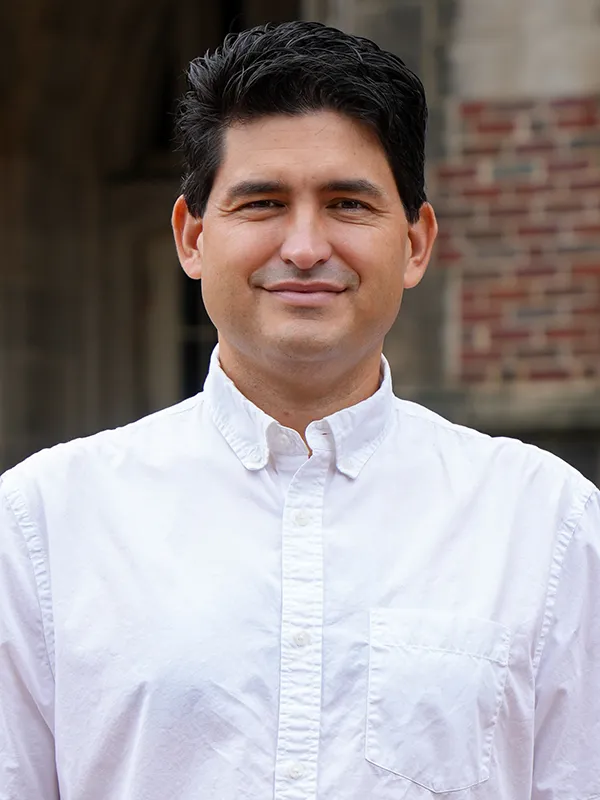Multi-Lab Collaboration Unites Math and Biology

Researchers from math and molecular biology collaborate for a new analysis method.
Photo by Erik Campos
An interdisciplinary team of University of Tennessee researchers recently published in Biophysical Journal on their development of a new statistical method that improves analysis in single-molecule fluorescence experiments, which are used to study important protein complexes in cells.

The team includes Associate Professor Ioannis Sgouralis and PhD student and lead author Chiara Mattamira, Department of Mathematics; and Professor Francisco Barrera, Associate Professor Rajan Lamichhane, graduate students Alyssa Ward, and postdoctoral associate Sriram Tiruvadi Krishnan, Department of Biochemistry & Cellular and Molecular Biology (BCMB).
Their manuscript features contributions from the three professors’ labs, combining theoretical work conducted by the math duo and experimental work conducted in BCMB. Sgouralis and Mattamira wanted to use data from real-life test cases to support and develop their theoretical work, so they teamed up with the BCMB labs of Barrera and Lamichhane, who specialize in single-molecule fluorescence experiments.
“As trained mathematicians, we always feel more comfortable working with equations and theoretical concepts,” said Sgouralis. “However, this work is about data analysis and as such it must not only adhere to the strict rules of mathematics but also remain relevant in the field setting.”

Traditional methods for analyzing this data often rely on assumptions about molecular behavior or require significant manual effort, leading to inaccuracies and inefficiencies. The new approach uses advanced statistical techniques that do not depend on these assumptions, making it more versatile and reliable. It has been tested on both real and simulated data, showing it can handle noisy conditions and deliver accurate results.
“Joint work in math and BCMB helped not only safeguard against unnatural analysis results but also improved our mathematical models and their assumptions,” said Sgouralis.
This innovation promises to make fluorescence experiments more efficient and extend their applications in studying cellular processes in areas of biophysics, biochemistry, molecular biology, and structural biology.
Fluorescence experiments use light to help researchers see and study processes that are otherwise too small to distinguish. The method avoids overly disturbing or altering the samples used, better observing biomolecular processes within sensitive living cells.

“Our approach contrasts with standard methods, where the signal from often millions of molecules is averaged, and by doing so you lose valuable data that informs on how molecules behave in complex ways,” said Barrera. “It is similar to needing glasses to read a book. With the glasses on all letters are clear, but without them you see something blurry that you cannot understand.”
The team hopes that their approach could be adopted by scientists around the world who use single-molecule fluorescence methods
“As experimental single-molecule biophysicists, we generate large amounts of data and are constantly seeking easier and more efficient ways to process and analyze them,” said Lamichhane. “Such analyses often require rigorous mathematical modeling and specialized expertise. The mutual interest is what brought us together and made this collaboration possible.”
The collaboration has also been a valuable experience for all trainees from the labs.
“Working with real experimental data alongside the BCMB team has been invaluable for me as a math PhD student focused on interdisciplinary work,” said Mattamira. “It’s taught me to develop a shared language across fields, translate theory into useful results, and collaborate effectively as part of a team. I’m confident those skills—clear communication, teamwork, and delivering practical outcomes—will serve me well in my career.”
By Randall Brown